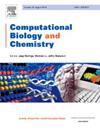白三烯 B4 (LTB4) 和 E resolvins (RvE1 和 RvE2) 激活白三烯 B4 受体 1 (BLT1)
IF 2.6
4区 生物学
Q2 BIOLOGY
引用次数: 0
摘要
白三烯 B4(LTB4)是一种由花生四烯酸(AA)衍生的脂质炎症介质。白三烯 B4 受体 1(BLT1)是一种 G 蛋白偶联受体(GPCR),是 LTB4 的受体。然而,炎症的消退是由专门的促进消退脂质介质(SPMs)驱动的,如 resolvins E1(RvE1)和 E2(RvE2)。这两种溶解素都来源于欧米伽-3 脂肪酸二十碳五烯酸(EPA)。在此,我们进行了长期分子动力学模拟(MD),研究了使用两种促溶解激动剂(RvE1 和 RvE2)和一种炎症激动剂(LTB4)激活 BLT1 受体的过程。我们采用分子力学泊松-玻尔兹曼表面积(MMPBSA)方法分析了受体的活化状态、静电相互作用和结合亲和力。结果表明,LTB4 和 RvE1 在较长的模拟时间内使受体处于激活状态。MD 显示,配体与受体之间的相互作用主要通过 H94、R156 和 R267 等残基发生。MMPBSA 计算显示 R156 和 R267 残基是两个主要热点。我们的 MMPBSA 计算结果与其他研究的实验结果一致。总之,本研究的结果为 BLT1 受体的活化机制提供了新的见解,加强了关键残基和相互作用在促溶解和促炎症激动剂结合中的作用。本文章由计算机程序翻译,如有差异,请以英文原文为准。
Leukotriene B4 receptor 1 (BLT1) activation by leukotriene B4 (LTB4) and E resolvins (RvE1 and RvE2)
Leukotriene B4 (LTB4) is a lipid inflammatory mediator derived from arachidonic acid (AA). Leukotriene B4 receptor 1 (BLT1), a G protein-coupled receptor (GPCR), is a receptor of LTB4. Nonetheless, the resolution of inflammation is driven by specialized pro-resolving lipid mediators (SPMs) such as resolvins E1 (RvE1) and E2 (RvE2). Both resolvins are derived from omega-3 fatty acid eicosapentaenoic acid (EPA). Here, long-term molecular dynamics simulations (MD) were performed to investigate the activation of the BLT1 receptor using two pro-resolution agonists (RvE1 and RvE2) and an inflammatory agonist (LTB4). We have analyzed the receptor's activation state, electrostatic interactions, and the binding affinity the Molecular Mechanics Poisson-Boltzmann Surface Area (MMPBSA) approach. The results showed that LTB4 and RvE1 have kept the receptor in an active state by higher simulation time. MD showed that the ligand-receptor interactions occurred mainly through residues H94, R156, and R267. The MMPBSA calculations showed residues R156 and R267 were the two mainly hotspots. Our MMPBSA results were compatible with experimental results from other studies. Overall, the results from this study provide new insights into the activation mechanisms of the BLT1 receptor, reinforcing the role of critical residues and interactions in the binding of pro-resolution and pro-inflammatory agonists.
求助全文
通过发布文献求助,成功后即可免费获取论文全文。
去求助
来源期刊

Computational Biology and Chemistry
生物-计算机:跨学科应用
CiteScore
6.10
自引率
3.20%
发文量
142
审稿时长
24 days
期刊介绍:
Computational Biology and Chemistry publishes original research papers and review articles in all areas of computational life sciences. High quality research contributions with a major computational component in the areas of nucleic acid and protein sequence research, molecular evolution, molecular genetics (functional genomics and proteomics), theory and practice of either biology-specific or chemical-biology-specific modeling, and structural biology of nucleic acids and proteins are particularly welcome. Exceptionally high quality research work in bioinformatics, systems biology, ecology, computational pharmacology, metabolism, biomedical engineering, epidemiology, and statistical genetics will also be considered.
Given their inherent uncertainty, protein modeling and molecular docking studies should be thoroughly validated. In the absence of experimental results for validation, the use of molecular dynamics simulations along with detailed free energy calculations, for example, should be used as complementary techniques to support the major conclusions. Submissions of premature modeling exercises without additional biological insights will not be considered.
Review articles will generally be commissioned by the editors and should not be submitted to the journal without explicit invitation. However prospective authors are welcome to send a brief (one to three pages) synopsis, which will be evaluated by the editors.
 求助内容:
求助内容: 应助结果提醒方式:
应助结果提醒方式:


